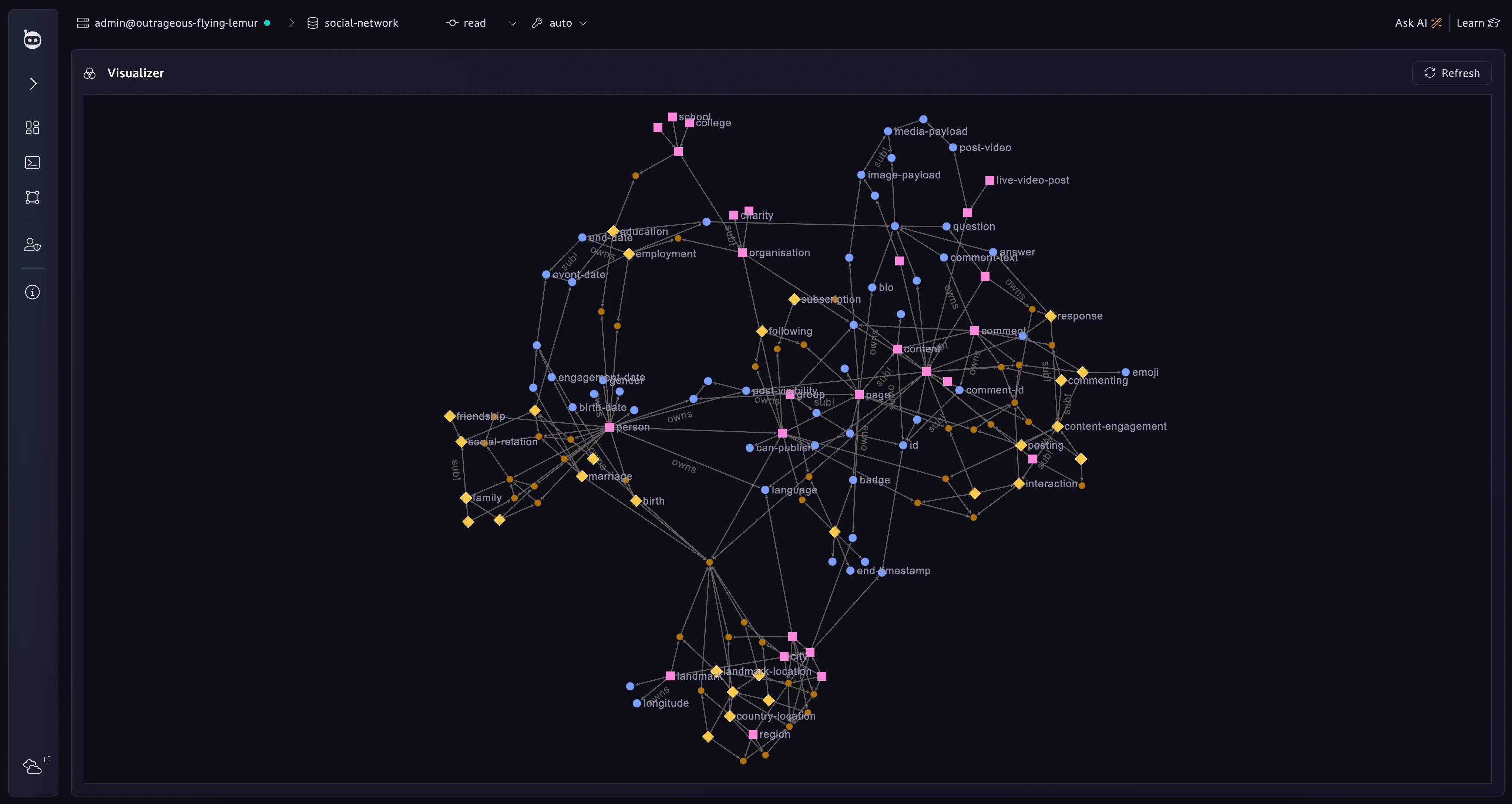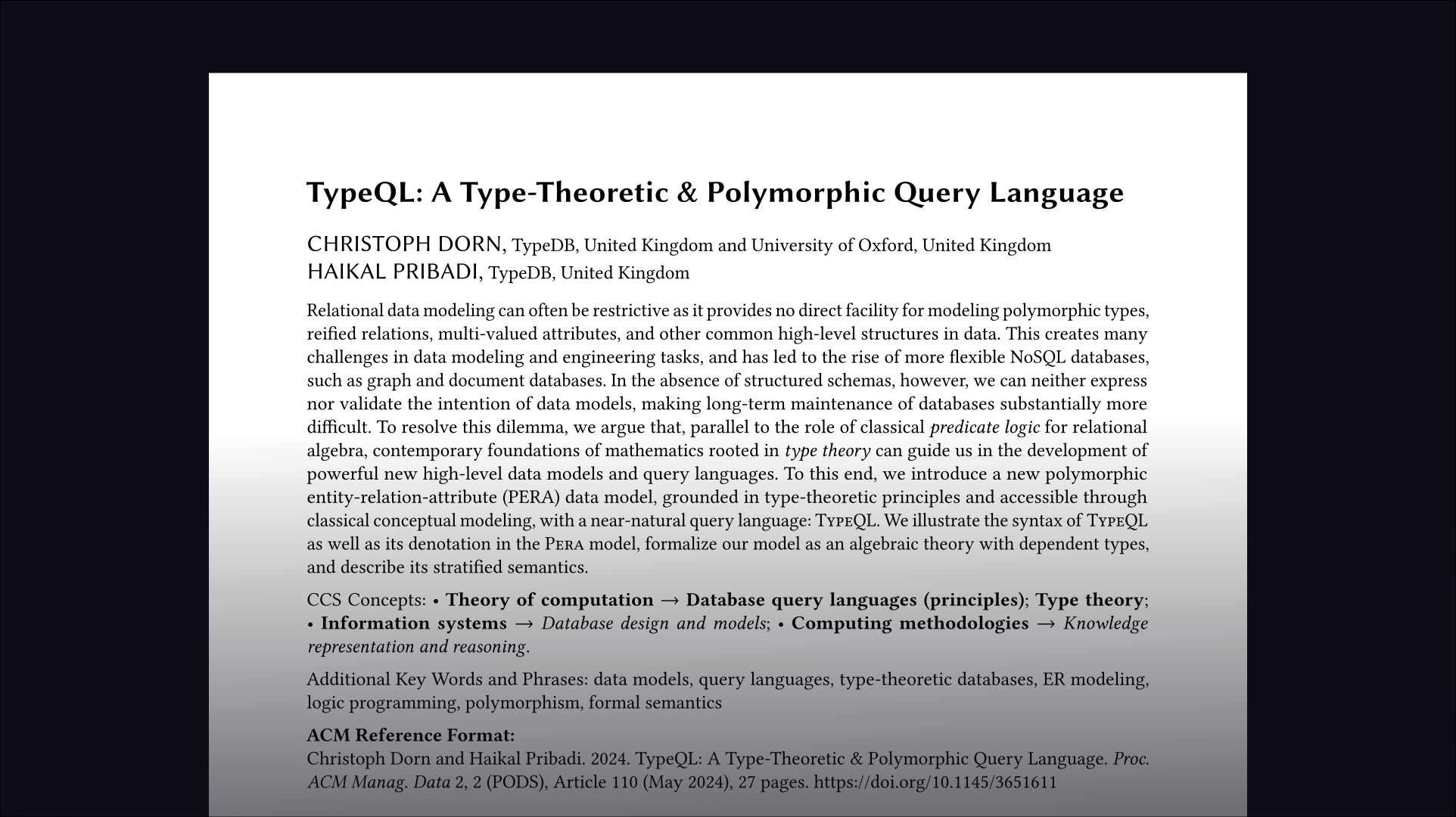A new type of financial intelligence. See the whole picture.
TypeDB gives firms a reasoning database built for connected, regulated data. It models financial products, instruments, accounts, and transactions semantically.
- 1
- 2
- 3
- 4
- 5
- 6
- 7
- 8
- 9
- 10
- 11
- 12
- 13
- 14
- 15
- 16
- 17
- 18
- 19
- 20
match
$user isa full-time-employee;
fetch {
"employee": { $user.* }
};
[{
"employee": {
"type": { "root": "entity", "label": "full-time-employee" },
"attribute": [
{ "value": "Chloé Dupond", "value_type": "string", "type": { "root": "attribute", "label": "full-name" } },
{ "value": "chloe@typedb.com", "value_type": "string", "type": { "root": "attribute", "label": "email" } },
{ "value": 185, "value_type": "long", "type": { "root": "attribute", "label": "employee-id" } },
{ "value": 35, "value_type": "long", "type": { "root": "attribute", "label": "weekly-hours" } }
]
}
}]
Complex financial products re-imagined
Financial systems run on either OWL, or complex relational tables and pipelines held together by ETL. Data is often siloed, and extracting insight is laborious and tooling is inadequate for purpose.
What’s missing is semantic depth: a shared language of how these entities relate and what that actually means.
We enable you to turn financial intelligence into a USP for your business. In a market where finding an edge can mean the difference between success and failure, the power of data intelligence cannot be overstated.
Semantic precision
Define complex financial products with roles and constraints, so “ownership,” “exposure,” and “risk” have exact meaning.
Connected analysis
Query across nested relationships to uncover indirect risk, linked accounts, or related counterparties.
Auditable functions
The inferences made by TypeDB functions are always transparent, explainable, and governed by schema logic.
Related articles
Model financial products precisely
Financial products are complex: a fund owns a derivative; a derivative references an underlying; a counterparty executes on behalf of a client. TypeDB lets you express these directly in the data model.
- Define instruments, trades, parties, and exposures as typed entities with formal relationships.
- Capture multi-role relationships (e.g., “issuer,” “guarantor,” “beneficiary”) without losing fidelity.
- Extend the schema safely as regulations and products evolve.
Value: Data models that mirror real-world financial logic, not approximations of it.

Trace interconnected risk in real-time
Risk propagates through relationships. TypeQL's PERA model and nested relations can surface indirect exposure that would take hours of joins and code in a traditional stack.
- Discover which counterparties are linked via shared holdings or obligations.
- Propagate stress scenarios automatically through dependency chains.
- Detect patterns like layered ownership or fund-of-fund exposure.
Value: Visibility into second and third- order risk, not just direct exposure.
- 1
- 2
- 3
- 4
- 5
- 6
- 7
- 8
- 9
- 10
- 11
- 12
- 13
match
$submit isa action, has name "submit order";
$approve isa action, has name "approve order";
insert
$seg isa segregation-policy (segregated-action: $submit, segregated-action: $approve);
match
$kevin isa user, has email "kevin@typedb.com";
insert
$perm isa permission-review (reviewer: $kevin, reviewee: $kevin);
Ensure true auditability and oversight
In finance, it’s not enough to get the answer. You must prove how you got it. TypeDB enforces correctness and provenance at the data-model level.
- Every query and inference follows logical, auditable structures.
- Constraints guarantee that financial logic (e.g., “one trade can’t settle twice”) is never violated.
- Role-based access and audit trails align with internal control frameworks in TypeDB Enterprise.
Value: Analytics you can show to an auditor, and they can trace every step.


